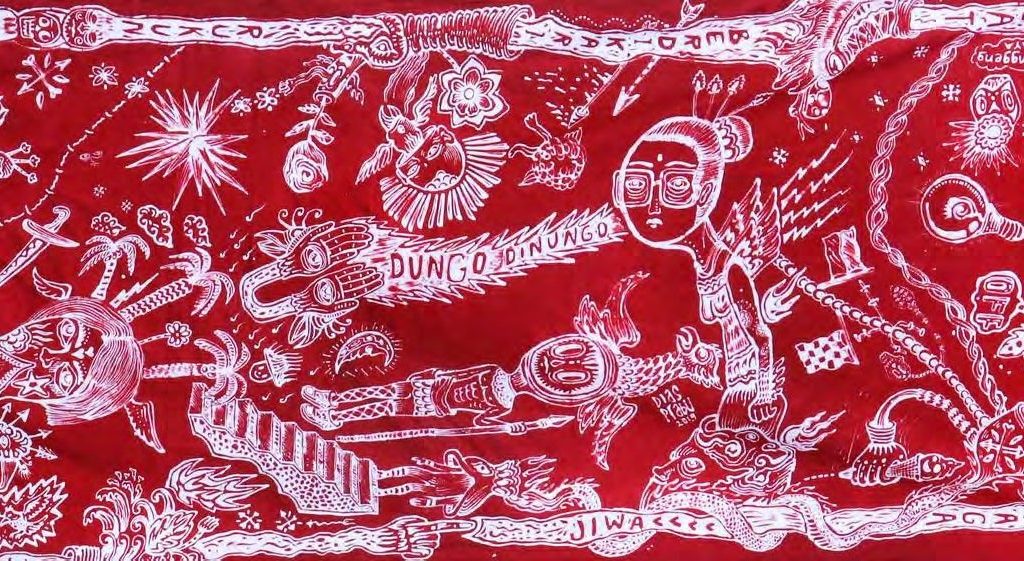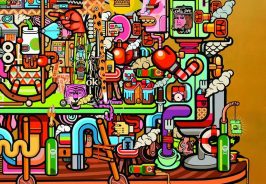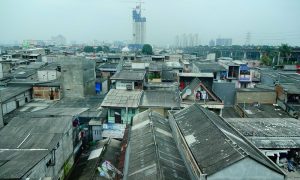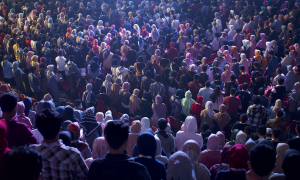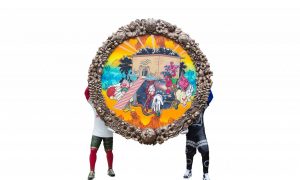In his most recent solo exhibition, Mythlines and Memories, at 16Albermarle, a new space in inner-city Sydney devoted to showcasing southeast Asian contemporary art, Dias Prabu presents work that is visually enchanting, discursively engaging and that promotes engagement with real world issues of transnational significance. Despite their very Yogyakartan pop sensibilities, Prabu’s batik paintings draw deeply on still resonant Javanese mythology to engage with issues of ongoing ecological importance. Judging by the audience’s reaction both on the opening day and at private viewings in Yogyakarta, his work deeply impresses its viewers in doing so. Like many Yogyakarta contemporary artists, Prabu’s work is guided by the fundamental question of how we are to live within the decaying liminal materiality of the disappearing organic world under the challenging and often puzzling circumstances of contemporaneity – those globalised conditions of overuse, disquiet, and dominance that increasingly circumscribe the lives of millions.
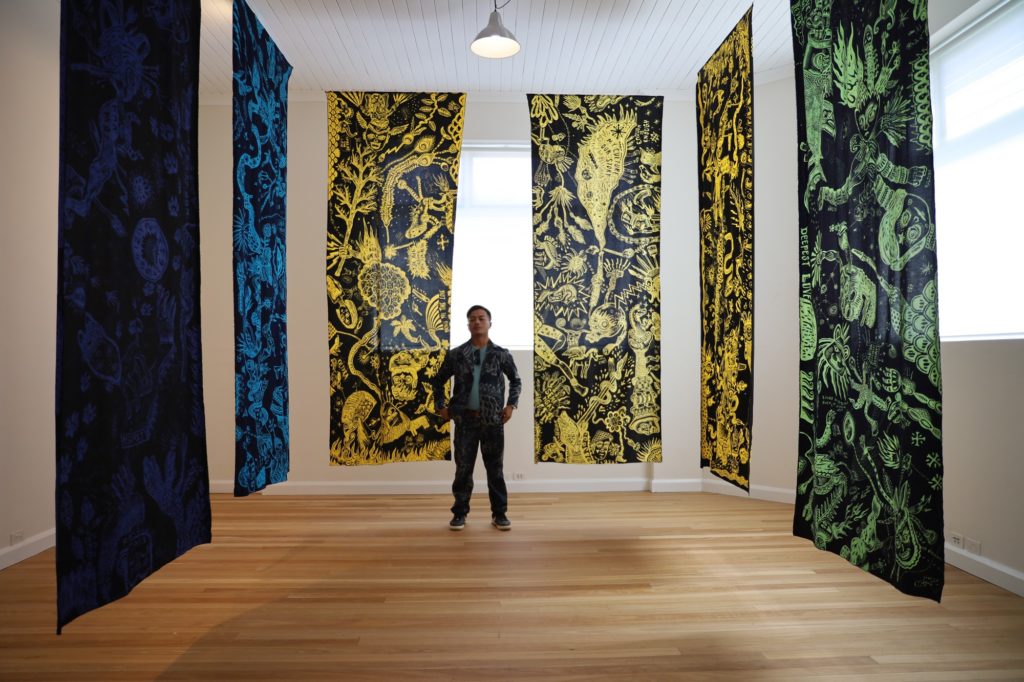
Installation view. Image courtesy the artist, photographer Dewie Bukit.
One of the most delightful things about researching art in Yogyakarta is the general openness of the art scene. With few exceptions the busiest and most famous artists readily make themselves available to answer questions one suspects they have answered many times before. However, beneath this collaborative surface there is a certain tension over the meaning and definition of contemporary art. It is clear that for many artists and curators, ‘contemporary’ has more than a merely temporal sense. Rather, it is associated with a particular approach to one’s artistic practice. For many artists, curators and critics, how one works and what ideas one works with, rather than one’s medium or style, determines the degree to which one is considered genuinely contemporary. This broader meaning has opened an avenue for batik artists to move out of traditional craft-based frameworks and into the artworld proper.
Across 90 interviews with members of the Yogyakarta art scene it has become clear to me that there is no essential definition to contemporary art in that city. However, there is across the board respect for artists who effectively balance three different kinds of value in their work. The first of these is the value of bentuk, the form or visual quality of the work. The second is the value and relevance of the wacana, the ideas or discourse embedded in or supported by the work. Finally, and closely related to the second, is the value of the work as something that has a dampak or manfaat, an effect or benefit in the world. In this exhibition Prabu effectively leverages all three of these values with an unusual degree of clarity for both the culturally expert and non-expert audience alike.
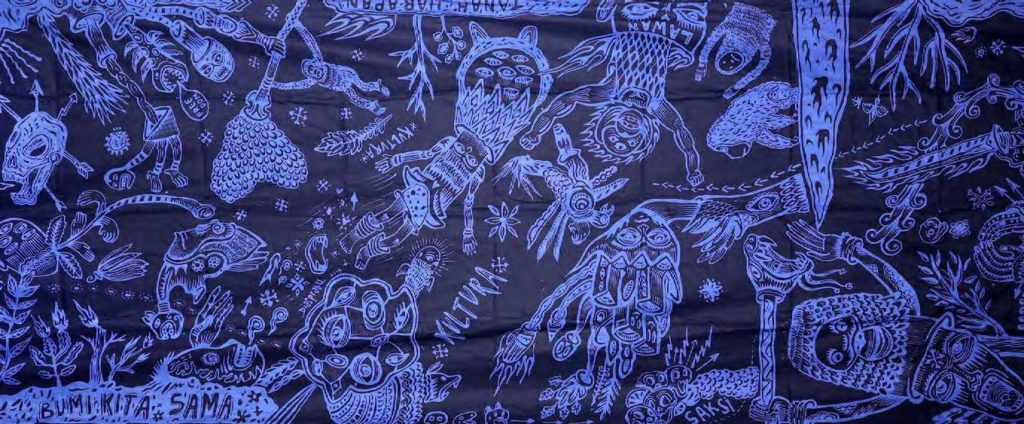
Imperfect Behaviour (2019) 300 x 110 cm batik tulis on silk cotton fabric. Image courtesy 16Albermarle Gallery and the artist.
Working quietly in a studio adjacent to verdant fields on the outskirts of the city, Prabu explores the question of living contemporaneously not just in the subject matter of his work but in his medium and materials. With a style this appears unplanned and intuitive but using the time-honoured wax-resist dying techniques of batik tulis, Prabu purposely relies on a combination of natural fabrics and synthetic dyes, bringing old and new together. He draws his designs directly onto silk-cotton material to display intricate stories steeped in his recollection of Javanese moral tales constructed around representations of mythical, endangered or extinct animals. The delight that he feels when the resulting tales fully resolve themselves in the final dyeing is also felt by audiences as they come to grips with his intent. However, even where viewers have not yet grasped the underlying story, the complexity of Prabu’s drawings and the richness of the colours remain endlessly engaging.
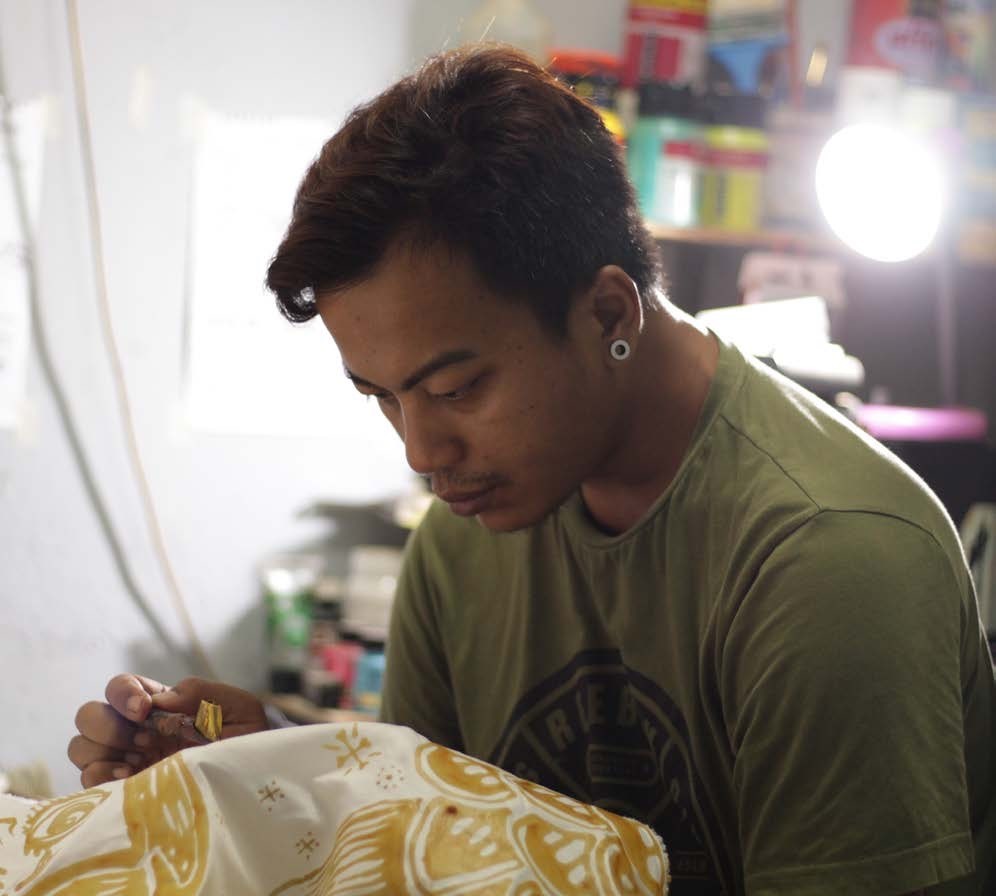
The artist in his studio applying wax to silk-cotton prior to dyeing as part of a 100-meter-long epic work for an Australian collector. Photograph by Dewie Bukit, courtesy 16Albermarle Gallery.
Batik has a long history in Indonesia and is recognised by UNESCO as an essential part of that country’s cultural heritage. However, if purists looking for pattern, repetition and abstract symbolism, look askance at Prabu’s sometimes naïve style and occasionally heavy-handed draughtsmanship, they would be missing the important way he has brought batik into the realm of contemporary art. Although he is not the first artist to do so, and in some superficial ways he does follow artists like Arwin Hidayat, Prabu’s work advances on his predecessors in the integration of content and materiality. He does so by using such a culturally resonant and valued medium in a way that allows the differential values of medium and message to flow into one another in a way that is mutually reinforcing and conducive to new ways of thinking about both.
As Dr. Elly Kent noted in her catalogue essay, despite widespread acceptance amongst the populace in general, it is rather unfashionable for self-consciously post-national Indonesian contemporary artists to demonstrate allegiance to patriotic values. However, through his reference to familial and folk sayings in his work Prabu manages to make Pancasila morality appear timeless and authentic rather than the manufactured residue of either Sukarnoism or the New Order’s post-political socio-cultural management strategies. Without overt jingoism Prabu taps into discourses of value that resonate widely in both the Yogyakarta art world and the broader community and that, when stripped of their allegorical character, are also perfectly comprehensible to Australians concerned with an ethic of collective survival in contemporary times.
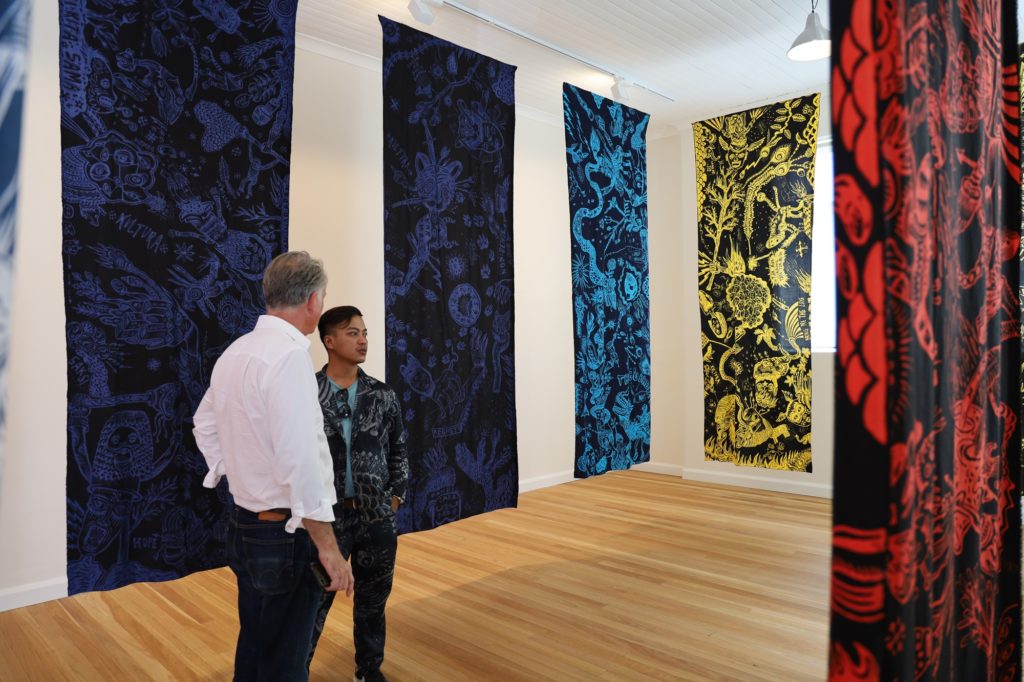
Installation view from the exhibition opening. Photograph by Dewie Bukit.
 Facebook
Facebook  Twitter
Twitter  Soundcloud
Soundcloud  Youtube
Youtube  Rss
Rss 